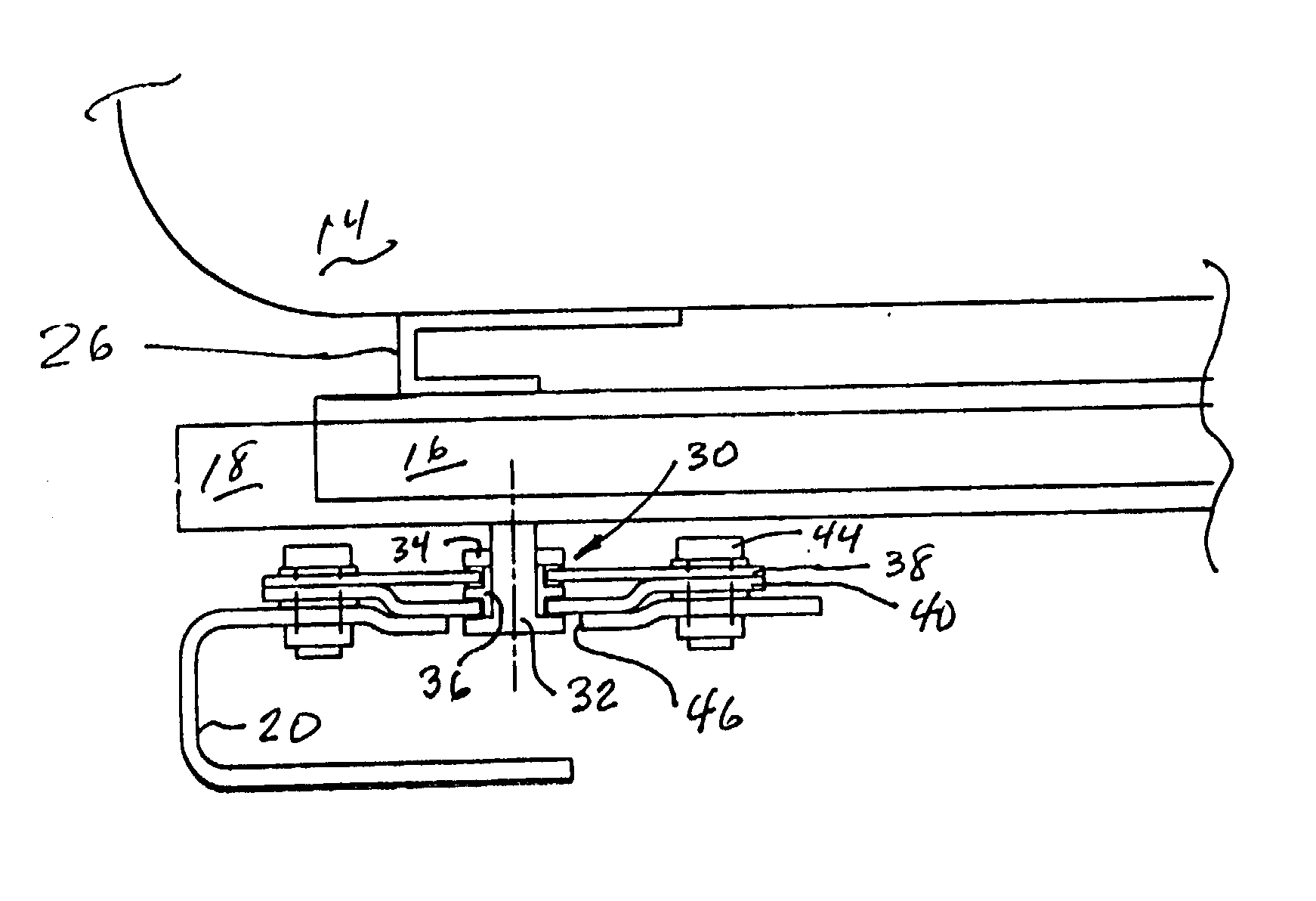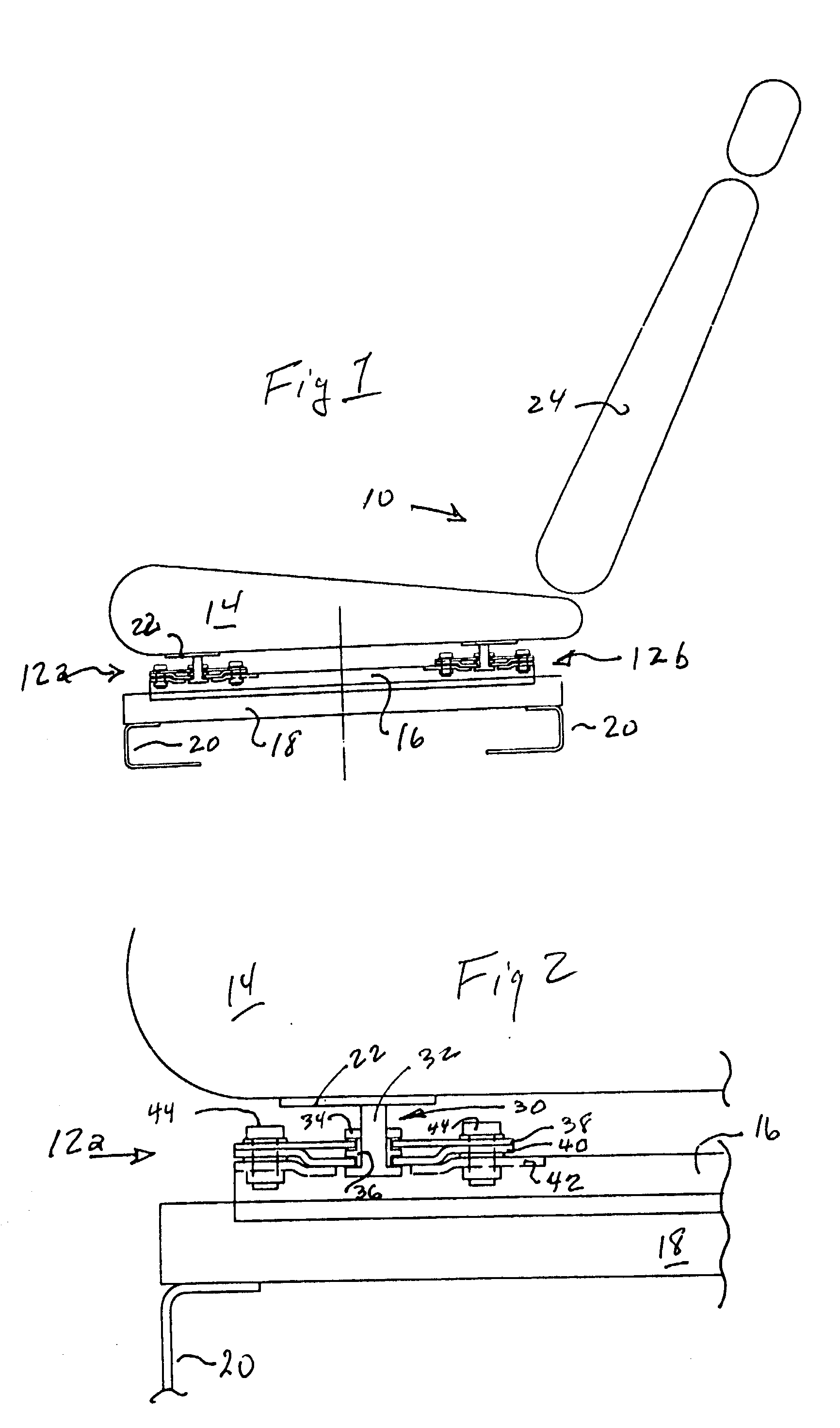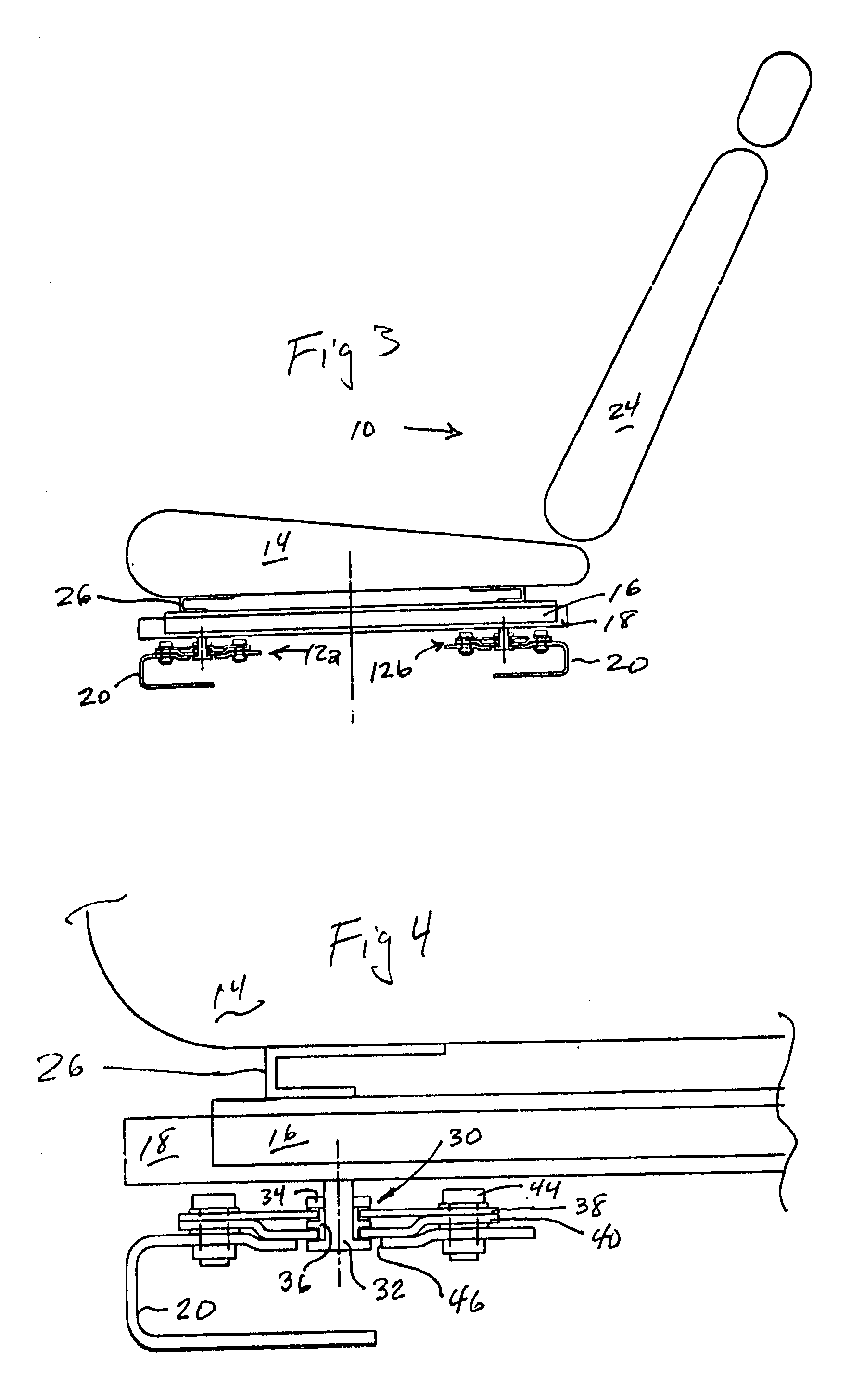Weight sensors having centralized loose tolerance universal force and Mx/My moments overload stops
a technology of universal force and centralized force, applied in the direction of force/torque/work measurement apparatus, instruments, tractors, etc., can solve the problems of false or distorted sensor output, mechanical or electrical failure of the sensor, add weight to the seat, etc., and achieve the effect of increasing the angular travel permitted
- Summary
- Abstract
- Description
- Claims
- Application Information
AI Technical Summary
Benefits of technology
Problems solved by technology
Method used
Image
Examples
first embodiment
[0063] FIG. 1 is a side elevation view, in schematic and partly in section, showing a full vehicle seat 10 with a load cell assembly 12 of the invention mounted between the seat 14 and the upper rail 16. The seat unit includes a lower rail 18, seat riser bracket 20, seat pan mounting plate 22 and seat back 24. The seat elements are conventional.
[0064] Four load cells are used, located generally at the corners of the seat pan, the two shown, 12a and 12b, being repeated on the other side of the seat.
[0065] FIG. 2 is a side elevation view, in partial section, showing the load cell 12a of FIG. 1 employing the inventive loose tolerance overload limit stop assembly 30, which comprises load stud 32, hex nut 34 and load limit stop guide 36. The load cell includes sensor substrate plate 38, limit stop bracket 40, and rail mounting bracket 42, and support bolts 44.
[0066] FIG. 3 is a side elevation view, in schematic and partly in section, showing a full vehicle seat 10 with the FIG. 1 load ce...
second embodiment
[0067] FIG. 5 is a longitudinal section view through a load cell 12 of the invention showing the detail of one embodiment of the inventive loose tolerance overload limit stop assembly 30, in this case employing a multi-part load stud 32a, 32b received in the limit stop guide 36. As above, the sensor substrate plate center hole 46 receives the stop guide 36. In turn the sensor substrate is supported by the limit stop bracket 40, which in this embodiment includes a center aperture 48 for receiving the lower end of the stop guide 36 in a central recess 50. Note that the substrate gap 46a, that is the gap formed between the wall of the hole in the substrate 46 and the outer surface of the guide 36, is larger than the gap in the limit stop bracket 48a, that is, the gap formed between the hole in the bracket 48 and the surface of the guide 36. (This is also illustrated in the enlarged FIG. 8, where the gap 46a is also referred to as the Mx / My gap.) The angular compensation and magnificati...
third embodiment
[0077] FIG. 12 is a side elevation view, partly in section of a load cell 12 of the invention showing use of the inventive loose tolerance limit stop 30 as mounted to a support bracket, e.g., an upper slide or a seat riser bracket 16. The load stud is bolted to a seat pan bracket 22 / 26 / 74. In this embodiment, an upper retaining ring 90, such as a snap-on C-ring is the keeper for the upper Bellville spring, and a similar lower retaining ring 92 functions as the limit stop flange for the load stud 32. Note the thinned sections 66 longitudinally of the stud, and the enlarged support lugs 94 in which the support bolts 78 are received. The distribution of the strain gauges 88 is better shown in FIG. 13, below.
[0078] FIG. 13 is a plan view of the load cell of FIG. 12 showing the location of the strain gauges 88 symmetrical about both axes 68, 70 of the sensor substrate. In this embodiment eight strain gauges are used, and they may be wired in a wide variety of configurations: opposed Whea...
PUM
 Login to View More
Login to View More Abstract
Description
Claims
Application Information
 Login to View More
Login to View More - R&D
- Intellectual Property
- Life Sciences
- Materials
- Tech Scout
- Unparalleled Data Quality
- Higher Quality Content
- 60% Fewer Hallucinations
Browse by: Latest US Patents, China's latest patents, Technical Efficacy Thesaurus, Application Domain, Technology Topic, Popular Technical Reports.
© 2025 PatSnap. All rights reserved.Legal|Privacy policy|Modern Slavery Act Transparency Statement|Sitemap|About US| Contact US: help@patsnap.com



